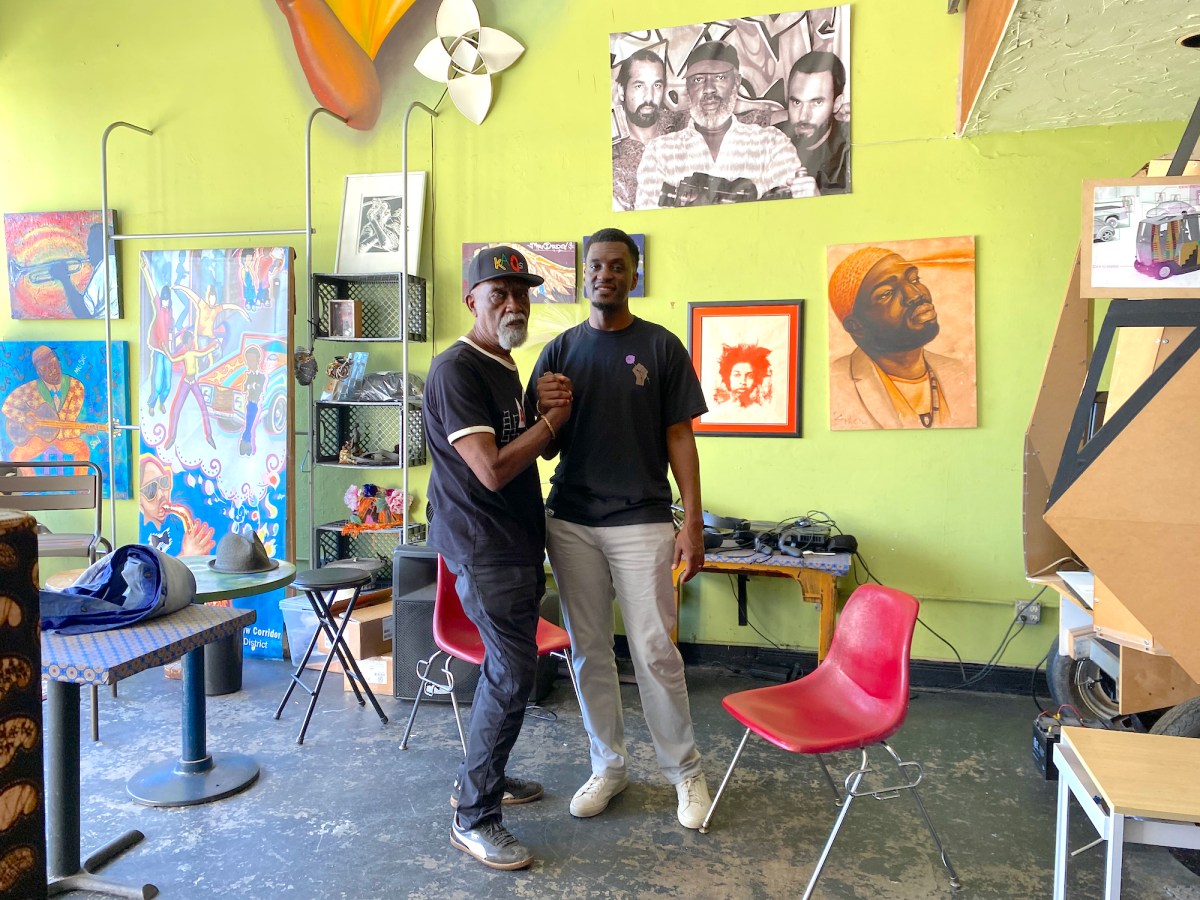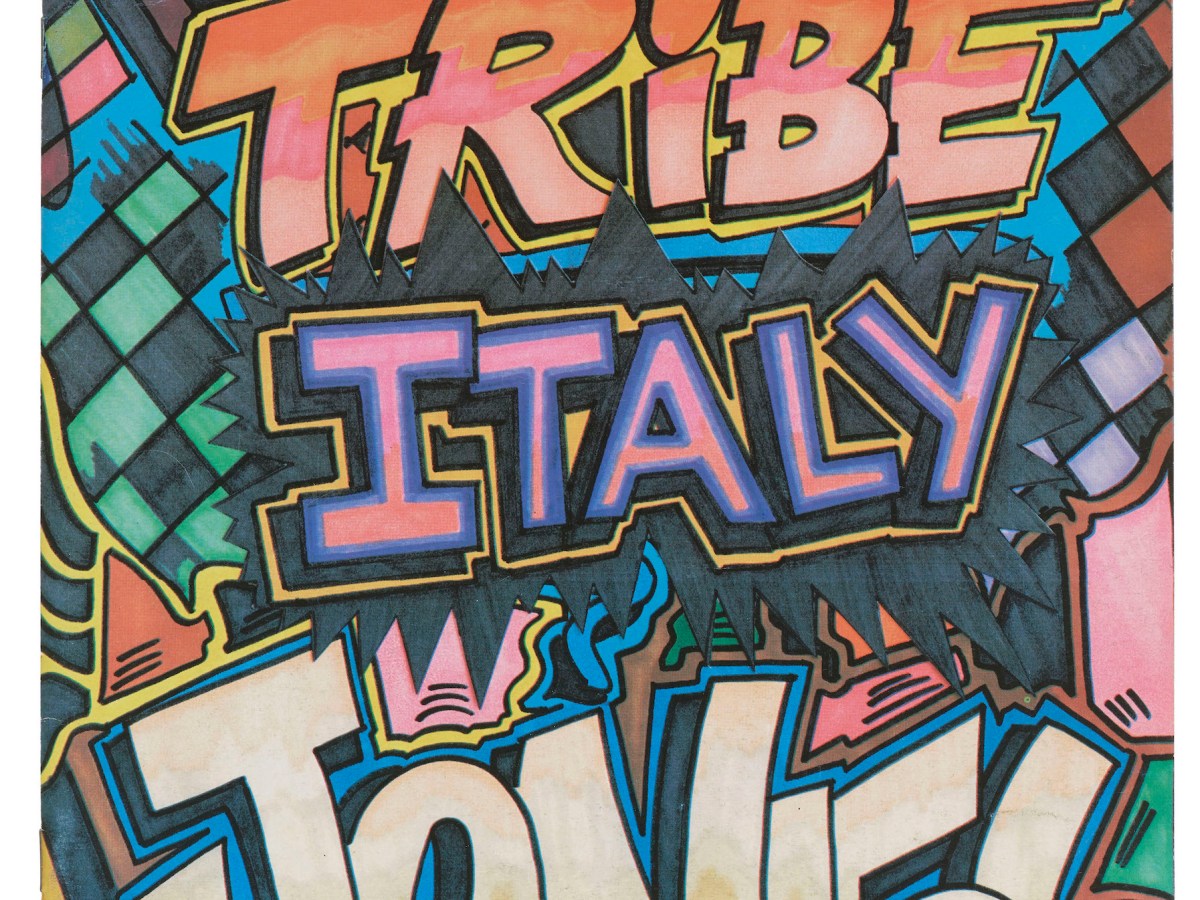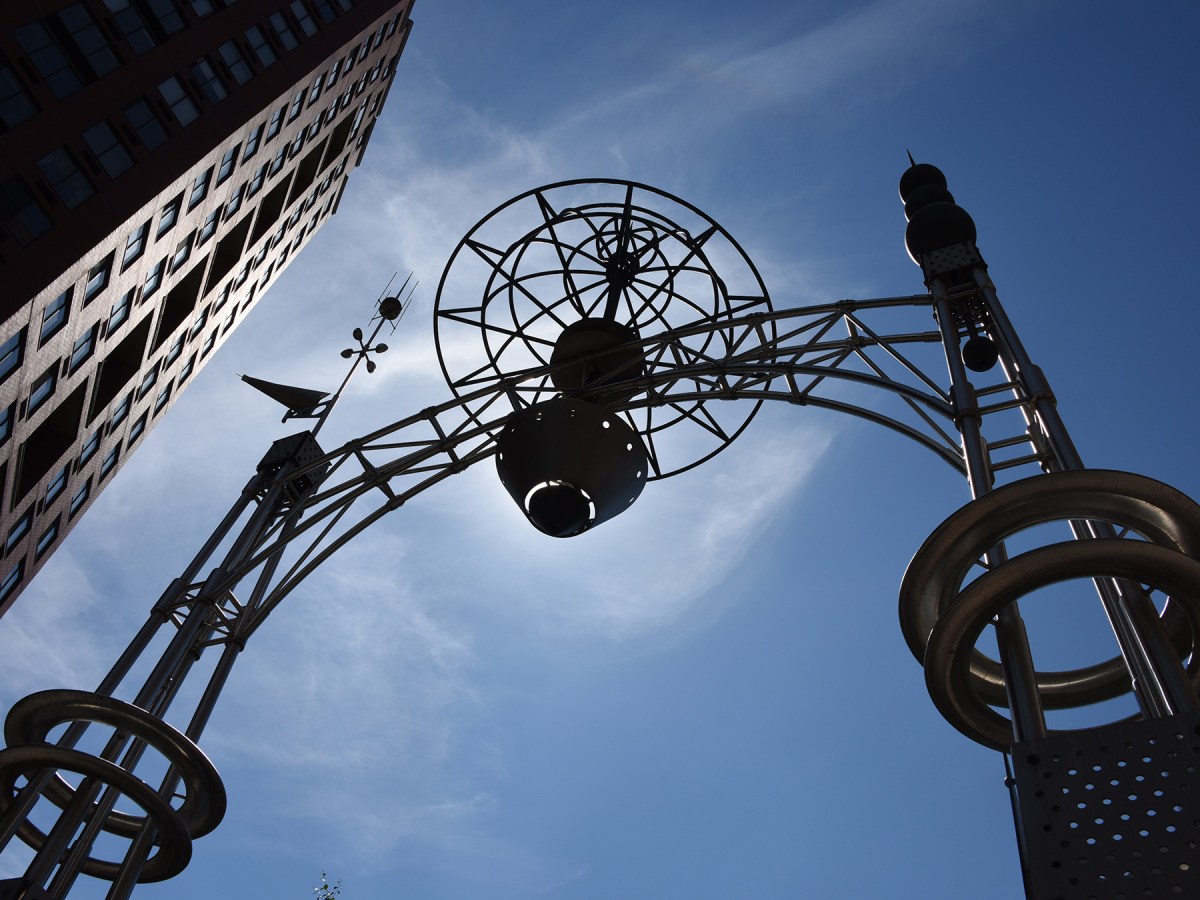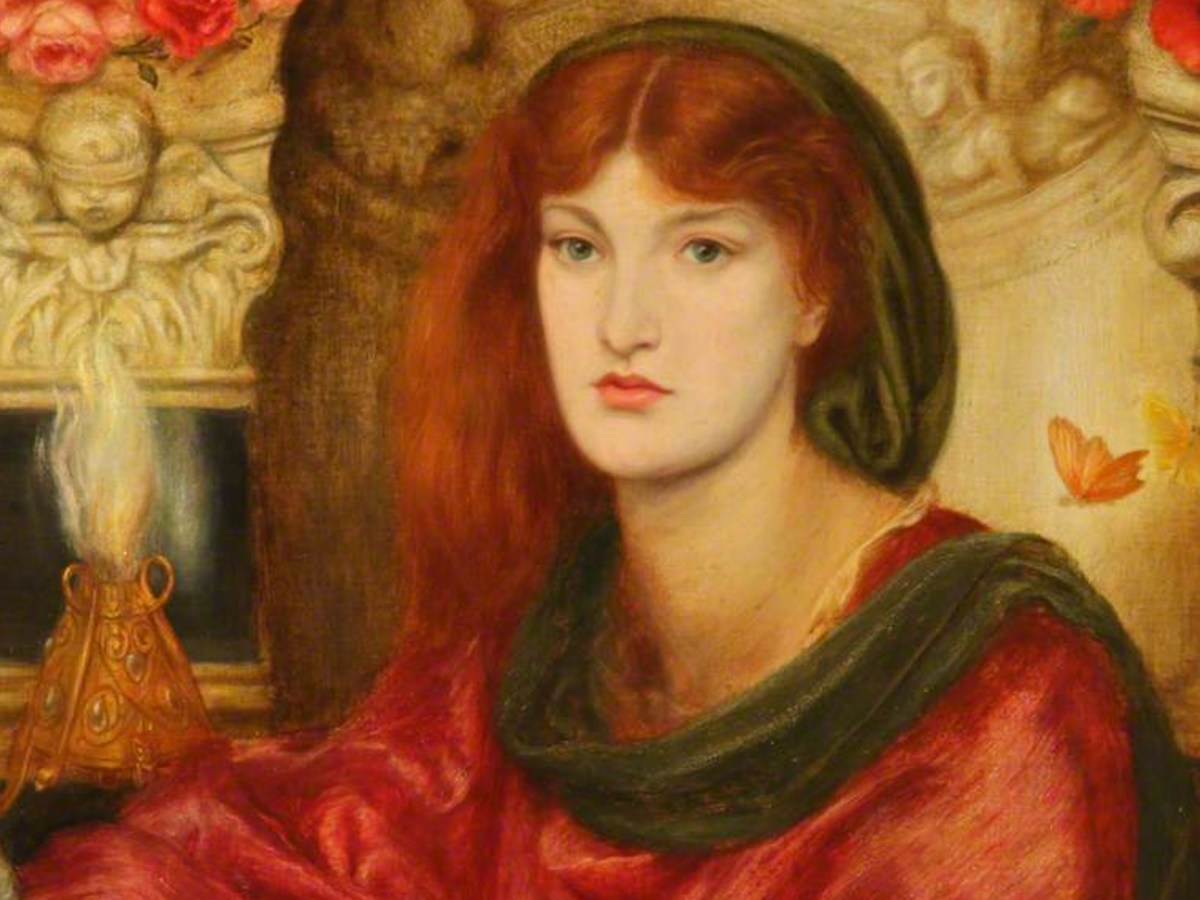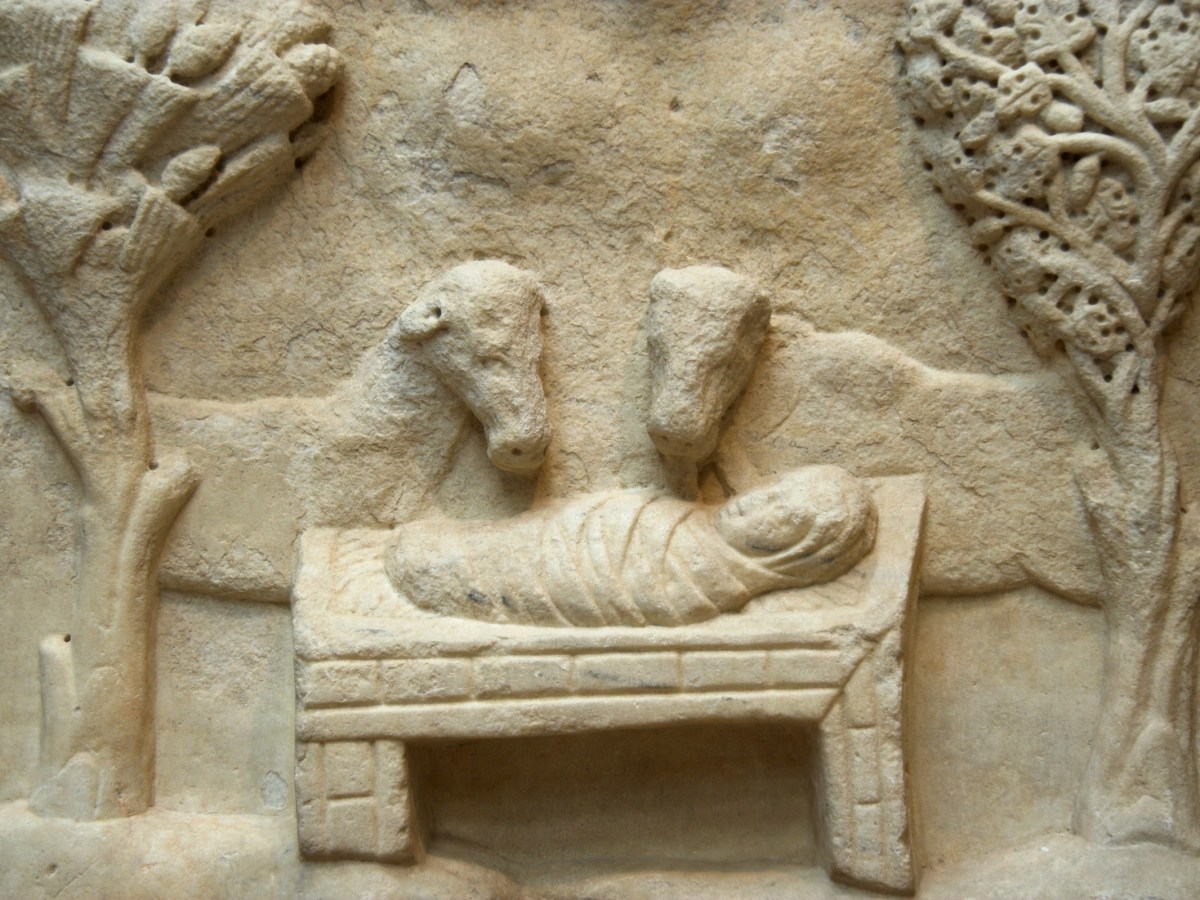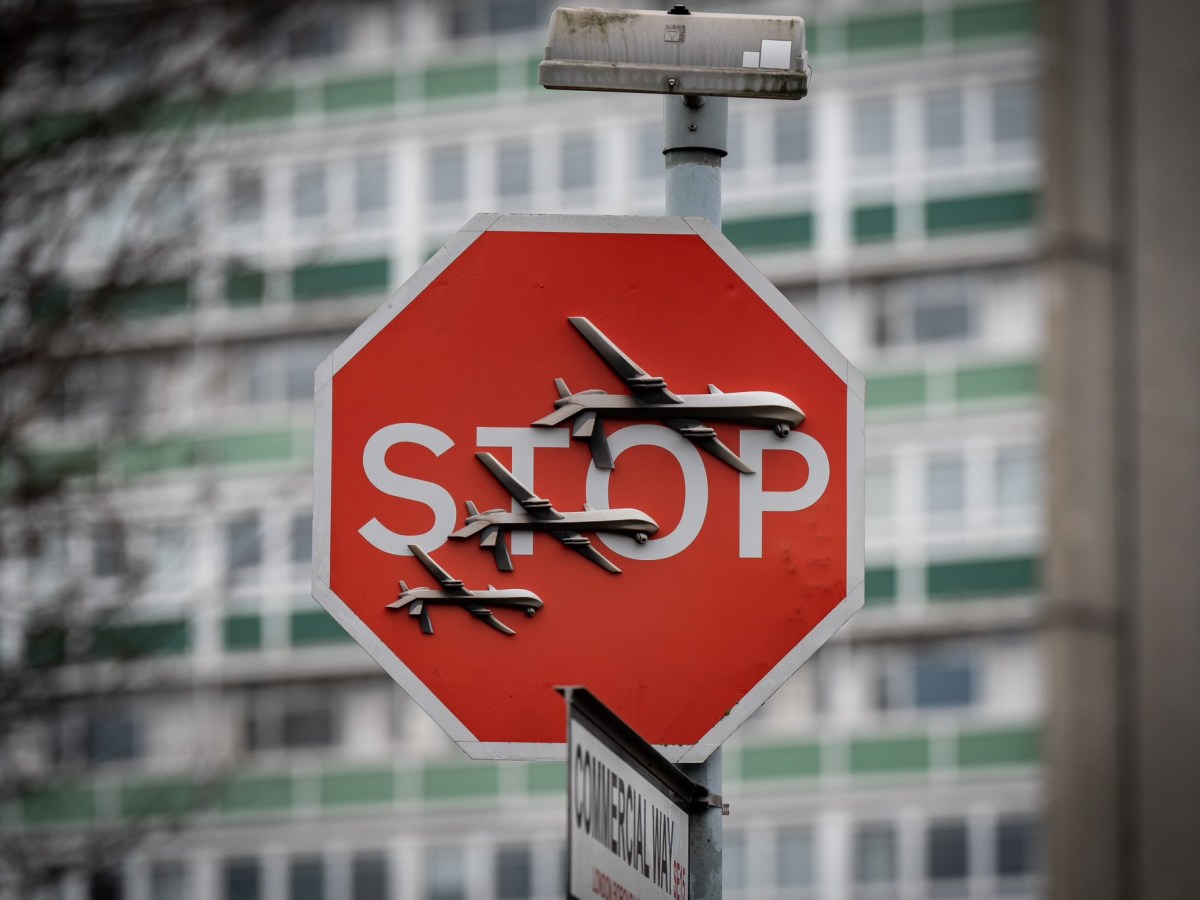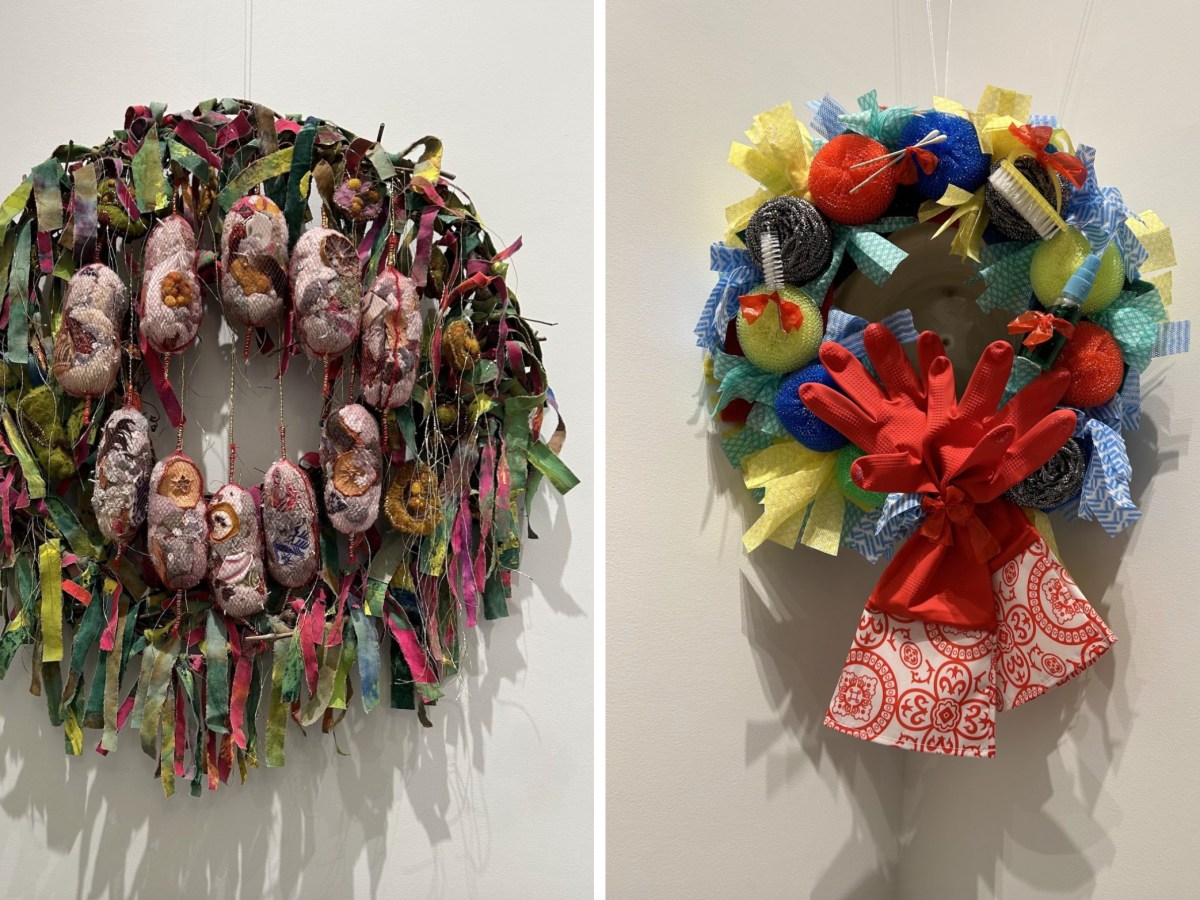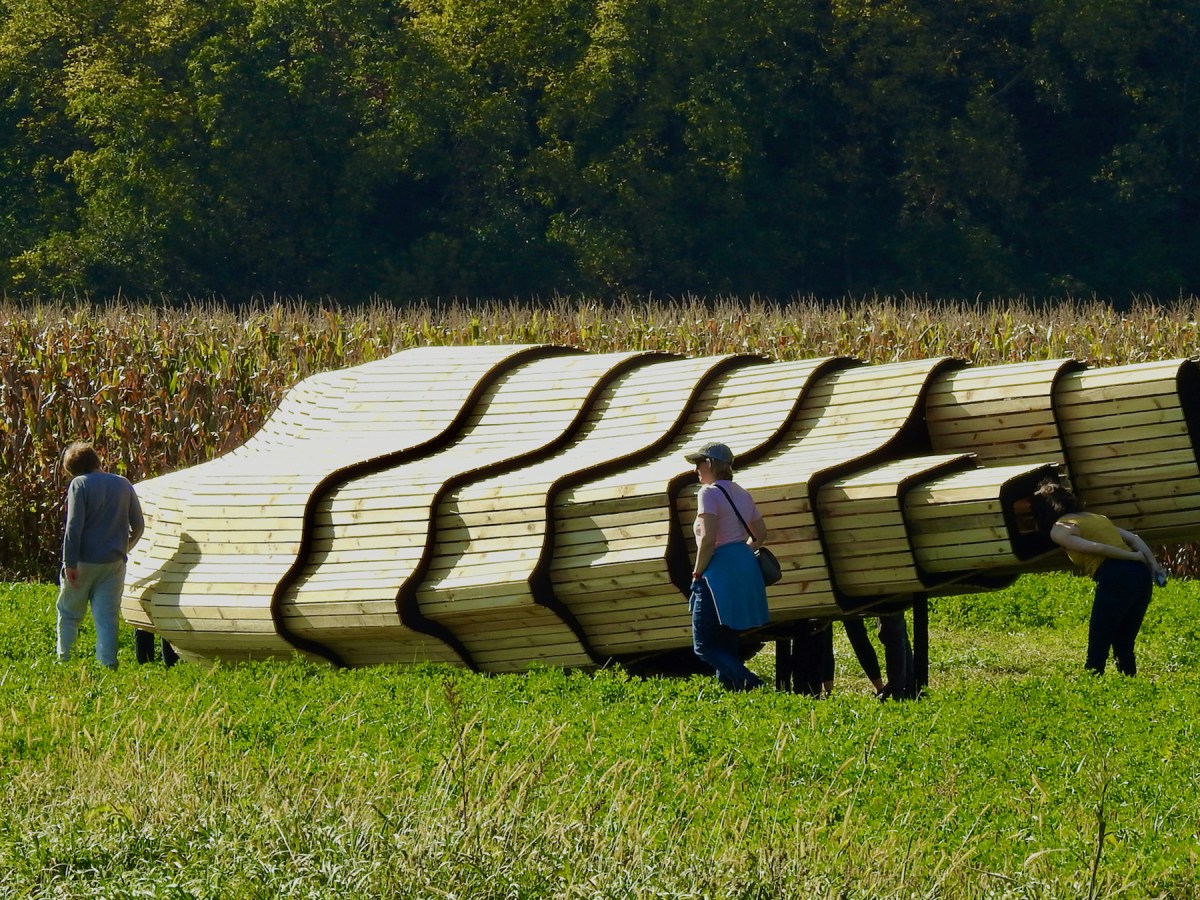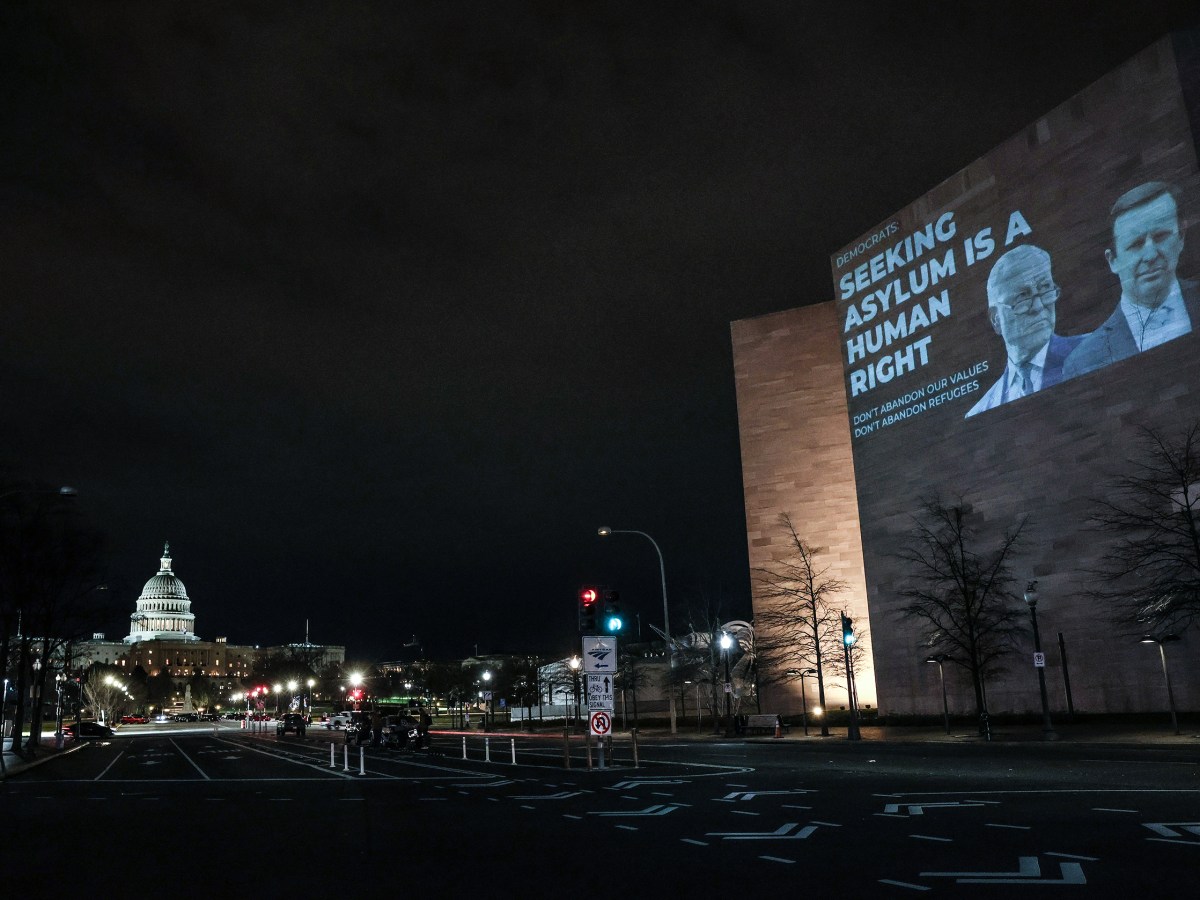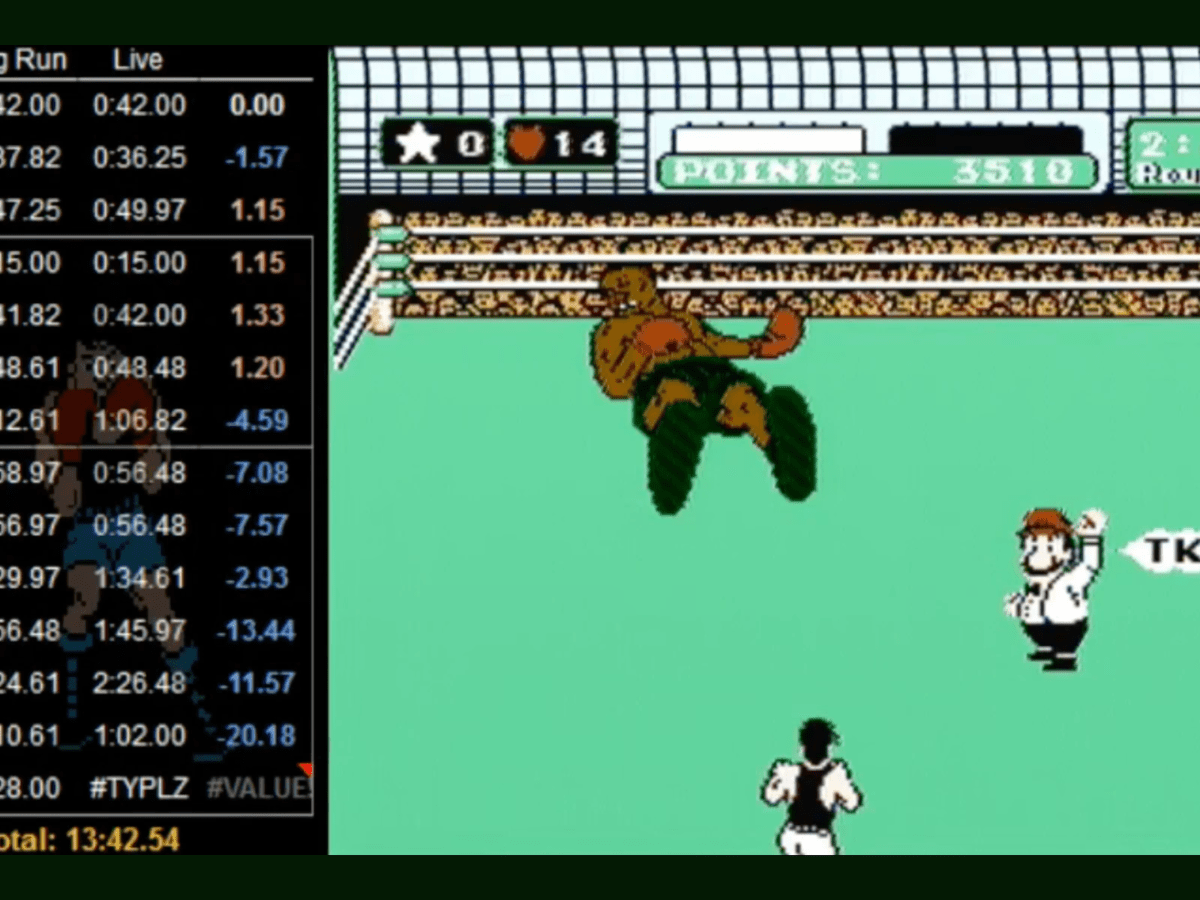LOS ANGELES — Ben Caldwell has had many roles over the past six decades: filmmaker, youth mentor, hip-hop advocate, community activist, transmedia futurist. A new book, KAOS Theory: The Afrokosmic Ark of Ben Caldwell (Angel City Press, 2023), takes readers on a vibrant tour through his life and work with an irreverent style that reflects his boundary-breaking sense of curiosity and invention.
The book began as simply a series of conversations between Caldwell and University of Southern California (USC) Associate Professor of Communication Robeson Taj Frazier. “There are so many ways that your name has popped up in things that I didn’t even know you were part of, can I just interview you?” Frazier recalls asking Caldwell in November 2017. For the next five months, the pair would meet every Tuesday and Thursday, and these informal exchanges would form the nucleus of the book.
The two discussed KAOS Network, the youth media center that Caldwell founded in 1984 in LA’s historically Black Leimert Park neighborhood; his participation in the LA Rebellion, a group of pioneering Black filmmakers who studied at UCLA beginning in the late 1960s; and his time serving as a soldier in Vietnam. Before all that, however, Caldwell was a boy named Benny growing up in the small city of Deming, New Mexico.

Caldwell took Frazier back to his birthplace, introduced him to his mother and siblings, and visited a park named after his grandfather, John Waits, who was a projectionist at the local movie theater (as well as a firefighter, farmer, and businessman). It was in the projection booth that Caldwell got his first experience with cinema, and not “seated in the regular seats, or even in the balcony where they placed Black folks,” Frazier said.
The book avoids the tropes of a traditional artist monograph. It is an ebullient, boisterous volume that layers archival photos and ephemera, plays with typefaces, mixes biography, poetry, and history, and eschews the white page in favor of keyed-up hues.
“There was no way for us to make a book with Ben Caldwell’s name on it and for it to look like a conventional history,” Frazier told Hyperallergic. “All the conventions of form, of what constitutes history, scholarship, as well as an artist’s catalogue, we weren’t abiding by all that.”
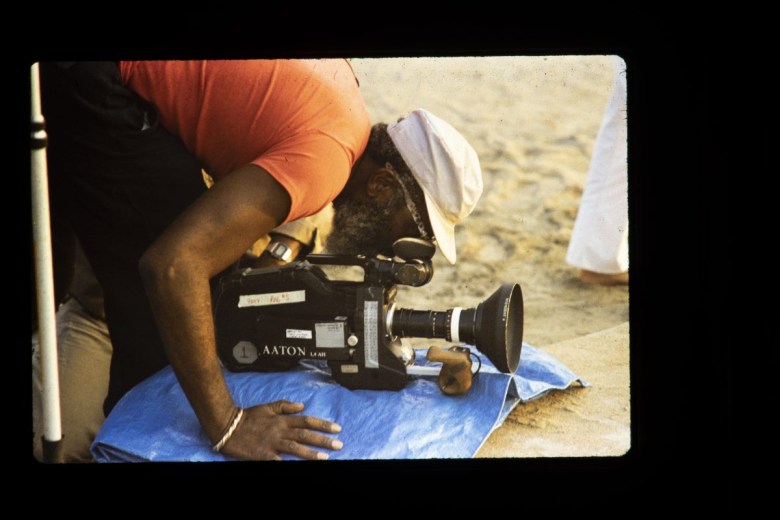
KAOS Theory follows Caldwell from Deming to Vietnam in the late 1960s and to the University of California, Los Angeles, where he received his MFA in film in 1976. Notable early films include Medea (1973), a cinematic collage exploring childbirth, and I&I: An African Allegory (1979), a genre-hopping work focused on the relationship between the individual and the community. After a stint teaching at Howard University, Caldwell returned to LA in late 1983 and opened a media center, originally named Video 3333, the following year, where young people could learn video production and animation, and later explore web design and the early internet.
“I know it confused everybody,” Caldwell says of his shift in gears. “I think the community I hung with at that time thought I was crazy, and they still do.”
The center also became a hip-hop incubator with the establishment of Project Blowed in 1993, an open mic night through which Aceyalone, Mika 9, Busdriver, and other well-known rappers cut their teeth. Despite its seminal role in supporting emerging hip-hop artists, Caldwell says he was not originally interested in the musical genre per se. “I was just interested in the culture of kids, and what they were doing.”
Kaos continues to offer workshops for children, bridging analog and digital skills. “They play chess along with learning how to break down a computer,” Caldwell explains.

His recent projects have similarly mixed technology with more traditional forms of community engagement and empowerment to preserve the area’s history but also engage with current residents in light of rapid development. In 2013, he started the Leimert Phone Company, an initiative to “hack” pay phones in collaboration with the USC Annenberg Innovation Lab so that they record and play back oral histories. Another project featured souped-up bus benches that allow transit riders to create their own soundtracks while waiting for the bus via buttons that trigger drum sounds. Most ambitiously, he has devised prototypes for a series of autonomous driving vehicles that will use VR and AR to convey the history of Leimert Park to riders, with community members as the storytellers.
“We thought of these as objects to deal with a kind of cultural erasure,” Caldwell says. “When people ride through here, it’ll be totally historically contextualized.”
When Caldwell speaks, he speaks decisively, alternating between periods of silence, then excitedly moving back and forth across time and space — from the architecture of Ancient Egypt to the untold story of Blacks in the Southwest and the past, present and future of Leimert Park. In a similar way to how he reconfigures technologies, he reimagines traditional narratives, reassembling them to form new stories.
“One of the things that Ben has done is remix, repurpose. There’s no sense of the thing that’s been created as being fixed in time and place and utility,” notes Frazier. “It’s all about seeing what the other vibrations or possibilities are that exist and how to tap into those. The book is also a reflection of that.”
A book signing event for KAOS Theory will take place on November 9 at The Artform Studio, along with a conversation between Frazier, Caldwell, and hip-hop artist Myka 9.

